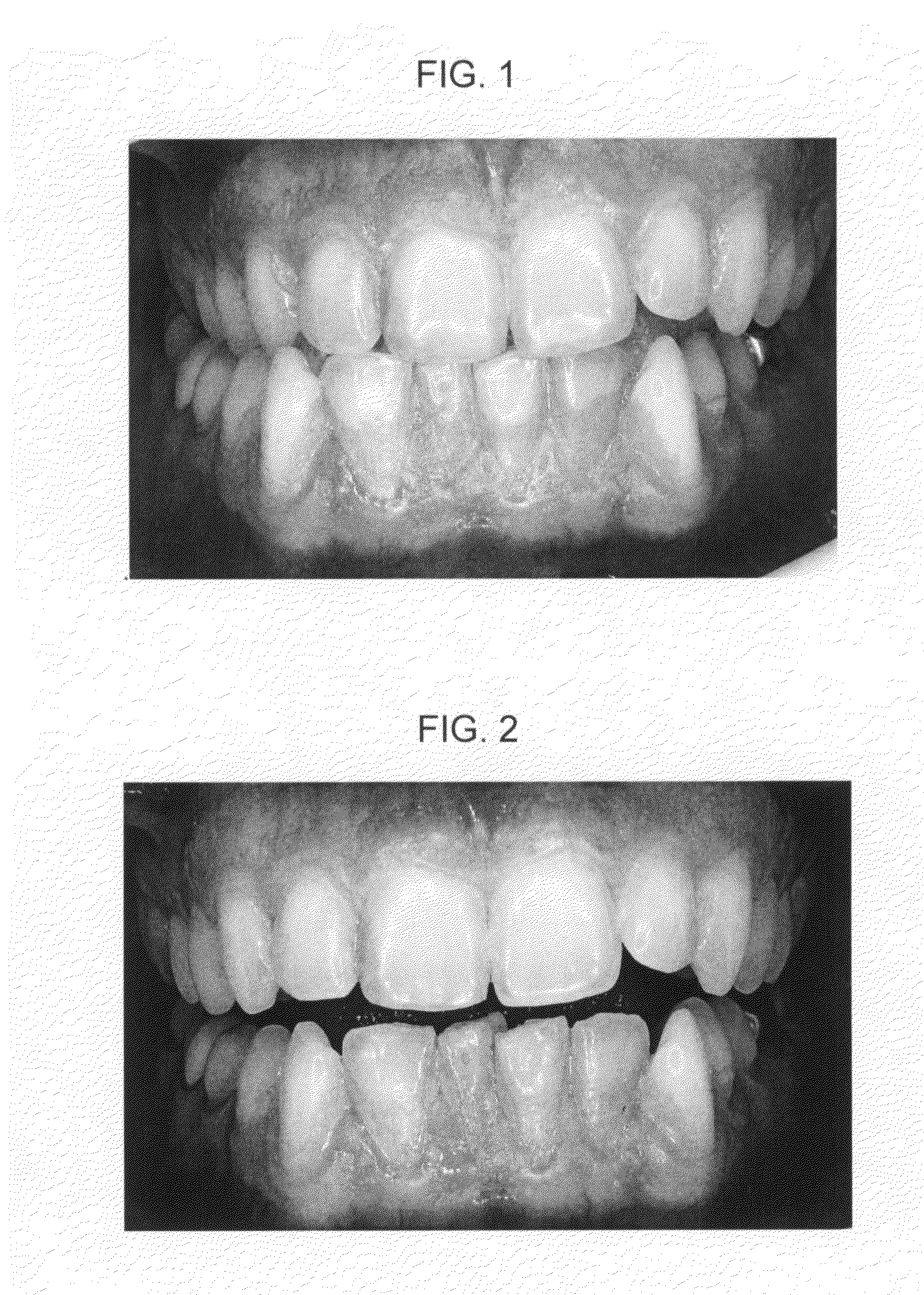Sustained Release Dosage Forms For Delivery of Agents to an Oral Cavity of a User
a technology of sustained release and dosage form, which is applied in the directions of biocide, plant/algae/fungi/lichens ingredients, drug compositions, etc., can solve the problems of taste and/or effectiveness, unsatisfactory, and relatively short reference time period
- Summary
- Abstract
- Description
- Claims
- Application Information
AI Technical Summary
Benefits of technology
Problems solved by technology
Method used
Image
Examples
examples
[0127]The following examples are put forth so as to provide those skilled in the art with a complete disclosure and description of how to make and use embodiments in accordance with the invention, and are not intended to limit the scope of what the inventors regard as their invention. Efforts have been made to ensure accuracy with respect to numbers used (e.g. amounts, temperature, etc.) but some experimental errors and deviations should be accounted for. Unless indicated otherwise, parts are parts by weight, molecular weight is weight average molecular weight, temperature is in degrees Centigrade, and pressure is at or near atmospheric.
example i
Preparation of Flavored Lozenges
[0128]Lozenges were prepared by mixing 0.124 g (25.8%) ethylcellulose, such as ETHOCEL® Standard 100 Premium; 0.0058 g (1.2%) wintergreen and 0.102 g (21.2%) peppermint oil; 0.093 g (19.3%) gum arabic; 0.032 g (6.6%) sucralose, and 0.032 g (6.6%) xylitol together along with other additives (see Table I, below) at room temperature and ambient humidity. Admixture of the components resulted in a soft, wet composition that was formed into a lozenge via a press and allowed to set for 24 hours. Then, lozenges each weighing 0.2 g were cut.
[0129]In the oral environment of a human test subject, after 2 hours in the mouth, the lozenges entirely dissolved thereby releasing the essential oil component and the other components into the aqueous environment of the oral cavity.
[0130]The constituents of the dosage form included:
TABLE IGrams%Ethylcellulose0.12425.8Sucralose0.0326.6Menthol0.0479.8Gum Arabic0.09319.3Sodium bicarbonate0.0132.7Eucalyptol0.00481.0Thymol0.00...
example ii
Preparation of Zinc Gluconate Lozenges
[0131]Lozenges were prepared by mixing 0.124 g (25.8%) ethylcellulose, such as ETHOCEL® Standard 100 Premium; 0.0058 g (1.2%) wintergreen and 0.102 g (21.2%) peppermint oil; 0.093 g (19.3%) gum arabic; 0.01 g (2.1%) zinc gluconate; 0.032 g (6.6%) sucralose; and 0.032 g (6.6%) xylitol together along with other additives (see Table II, below) at room temperature and ambient humidity. Admixture of the components resulted in a soft, wet composition that was formed into a lozenge via a press and allowed to set for 24 hours. Then, lozenges each weighing 0.2 g were cut.
[0132]In the oral environment of a human test subject, after 2 hours in the mouth, the lozenges entirely dissolved thereby releasing the essential oil component, zinc, and the other components into the aqueous environment of the oral cavity.
[0133]The constituents of the dosage form included:
TABLE IIGrams%Ethylcellulose0.12425.8Sucralose0.0326.7Wintergreen0.00240.5Sodium bicarbonate0.0132...
PUM
| Property | Measurement | Unit |
|---|---|---|
| viscosity | aaaaa | aaaaa |
| viscosity | aaaaa | aaaaa |
| particle size diameter | aaaaa | aaaaa |
Abstract
Description
Claims
Application Information
 Login to View More
Login to View More - R&D
- Intellectual Property
- Life Sciences
- Materials
- Tech Scout
- Unparalleled Data Quality
- Higher Quality Content
- 60% Fewer Hallucinations
Browse by: Latest US Patents, China's latest patents, Technical Efficacy Thesaurus, Application Domain, Technology Topic, Popular Technical Reports.
© 2025 PatSnap. All rights reserved.Legal|Privacy policy|Modern Slavery Act Transparency Statement|Sitemap|About US| Contact US: help@patsnap.com


